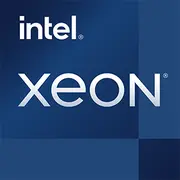Intel Xeon W-11955M

Intel Xeon W-11955M: Mobile Workstation in a Compact Form Factor
April 2025
Introduction
Intel Xeon processors have traditionally been associated with servers and powerful workstations, but with the arrival of the Xeon W-11955M, the company has opted for mobility without compromise. This chip, designed for professional laptops, combines high performance, energy efficiency, and corporate reliability. Let’s explore who it is suitable for and what tasks it can handle.
Architecture and Process Technology: 10nm SuperFin and 8 Cores
Tiger Lake-H: Power in Detail
The Xeon W-11955M is based on the Tiger Lake-H architecture and is manufactured using the 10nm SuperFin process technology. This has allowed Intel to increase transistor density and reduce power consumption. The processor is equipped with 8 cores and 16 threads, with a base frequency of 2.6 GHz and a turbo mode of up to 5.0 GHz. Key features:
- 24 MB L3 Cache — twice as much as the Core i9 of the same generation, speeding up the processing of complex tasks.
- Integrated Intel UHD Graphics for 11th Generation — 32 execution units (EUs), supporting 4K/60 fps, and AV1 decoding.
- PCIe 4.0 Support — up to 20 lanes for fast SSDs and external GPUs.
- Thunderbolt 4 and Wi-Fi 6E — for connecting peripherals and high-speed Internet.
For comparison: The Apple M2 Pro (2025) offers 12 cores, but in mobile Xeon variants, the focus is on multithreading combined with corporate features (e.g., ECC memory).
Power Consumption and TDP: Balancing Power and Battery Life
35W TDP — surprisingly low for a Xeon. However, this is a "long" TDP: under peak loads, the chip can consume up to 65W, but the laptop’s cooling system must handle this. Energy-saving technologies:
- Intel Speed Shift — instant frequency switching based on load.
- Dynamic Tuning 2.0 — adaptation to thermal conditions in real-time.
- “Eco” Mode — reduces frequency for office applications.
Example: In the Dell Precision 5570 with the Xeon W-11955M and an 86 Wh battery, web surfing time reaches 8–9 hours, but rendering time drops to 2–3 hours.
Performance: From Excel to 3D Modeling
Geekbench 6: 2112 (Single-Core) / 9081 (Multi-Core) — on par with the desktop Core i7-12700K. Real-world scenarios:
- Office Tasks: Working simultaneously with dozens of tabs, Excel sheets, and Zoom — CPU load does not exceed 20%.
- Multimedia: Rendering 4K video in Premiere Pro takes 15% less time than with the Ryzen 9 6900HX.
- Gaming: On integrated graphics — CS2 at medium settings in Full HD (60–70 fps), Forza Horizon 5 at 30 fps (low). With a discrete RTX 4070 Mobile — full comfort in AAA titles.
- Turbo Mode: During brief loads (up to 10 seconds), the frequency rises to 5.0 GHz, but in Sustained Power Mode, it stabilizes at 4.2 GHz.
Important: For extended loads (for example, code compilation), an efficient cooling system is critical. In thin ultrabooks, the chip may throttle.
Usage Scenarios: Who is the Xeon W-11955M for?
1. Engineers and Designers: SolidWorks, AutoCAD, MATLAB — 8 cores and ECC memory reduce the risk of errors in calculations.
2. Developers: Compiling large projects, working with Docker containers.
3. Analysts: Processing Big Data in Python or R.
4. Video Editors: Rendering in DaVinci Resolve with Quick Sync acceleration.
Not recommended for:
- Gamers — better to choose a laptop with a Core i7 and RTX 4070 for the same $2000.
- Regular users — excessive power for which you’ll pay an extra $300–500.
Battery Life: How to Extend Usage Time?
- Adaptive Screen Dimming: Laptops with this processor are often equipped with brightness sensors.
- Disabling Background Processes: Windows 11 Pro is optimized for working with Xeon.
- “Power Saving” Mode in BIOS: Limits TDP to 25W, reducing frequencies.
Tip: Choose models with at least a 90 Wh battery — such as the HP ZBook Fury 16 G9 (starting at $2800).
Comparison with Competitors
1. AMD Ryzen 9 7940HS (Zen 4, 8 cores, 5.2 GHz):
- Higher performance in multi-threaded tasks (Geekbench 6 Multi-Core ~10500).
- No support for ECC memory.
- Laptop prices: starting from $2200.
2. Apple M3 Pro (12 cores, 3nm):
- Better energy efficiency (up to 12 hours of use).
- Limited software compatibility (not suitable for Windows programs).
- MacBook Pro 16 price: starting from $2999.
3. Intel Core i9-12900HK (14 cores, 5.0 GHz):
- Cheaper (laptops start from $2000).
- Lacks corporate features like vPro.
Conclusion: The Xeon W-11955M is a choice for those who need maximum stability and support for ECC memory.
Pros and Cons
Strengths:
- High reliability and ECC support.
- Powerful multi-threaded performance.
- Compatibility with professional software (certified drivers for CAD).
Weaknesses:
- Laptop prices start from $2500.
- Integrated graphics are weaker than AMD Radeon 680M.
- Requires quality cooling.
Laptop Selection Recommendations
1. Device Type: Only workstations — Dell Precision, Lenovo ThinkPad P16, MSI WE76.
2. Cooling: At least two fans and heat pipes with liquid metal coating.
3. Memory: At least 32+ GB DDR5 with ECC.
4. Storage: PCIe 4.0 NVMe SSD starting from 1TB (e.g., Samsung 990 Pro).
5. Display: 4K panel with 100% Adobe RGB coverage for color correction.
Example Configuration:
- Dell Precision 5770: Xeon W-11955M, 64 GB DDR5, RTX 5000 Ada, 2 TB SSD, 17-inch 4K display — $4500.
Final Conclusion
The Intel Xeon W-11955M is a specialized processor for professionals who value stability and performance. It is ideal for engineers, programmers, and designers willing to pay for the premium segment. If you do not need ECC memory or certified drivers, consider Core i9 or Ryzen 9 — they will save you budget without sacrificing power in everyday tasks.
Basic
CPU Specifications
Memory Specifications
GPU Specifications
Miscellaneous
Benchmarks
Compared to Other CPU
Share in social media
Or Link To Us
<a href="https://cputronic.com/en/cpu/intel-xeon-w-11955m" target="_blank">Intel Xeon W-11955M</a>